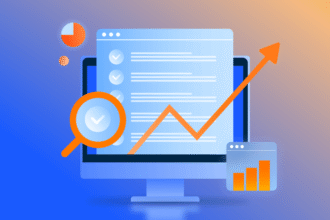Introduction to the IP Address 264.68.111.161
Welcome to the intriguing world of IP addresses! Today, we’re diving into a specific and often overlooked address: 264.68.111.161. While it might seem like just a string of numbers, this IP holds valuable insights about our digital landscape. Understanding such addresses is crucial in an era where online connectivity shapes our daily lives.
Whether you’re curious about how these numerical identifiers work or want to explore their significance, you’ve come to the right place. Join us as we unravel the mysteries behind 264.68.111.161 and discover what makes it tick in today’s interconnected world!
What is an IP Address?
An IP address, or Internet Protocol address, is a unique identifier assigned to devices connected to the internet. Think of it as a digital mailing address that ensures data packets reach their intended destinations.
Every device—be it a computer, smartphone, or server—needs an IP address to communicate over networks. This system helps route information accurately and efficiently across vast distances.
There are two main types of IP addresses: IPv4 and IPv6. The former has been widely used for decades but is limited in number due to its 32-bit format. In contrast, IPv6 was developed to accommodate the growing need for more addresses with its 128-bit structure.
In essence, an IP address plays a crucial role in how we connect online. It’s fundamental for everything from browsing websites to streaming content seamlessly.
The Importance of IP Addresses in the Digital Age
IP addresses play a critical role in our online experiences. They serve as unique identifiers for devices connecting to the internet, ensuring data is directed accurately and securely.
Every time you browse a website or stream content, your IP address allows servers to recognize your device. This interaction forms the backbone of digital communication.
Moreover, IP addresses help manage network traffic efficiently. They enable routers to direct packets of information where they need to go without confusion or delay.
In today’s world, understanding IP addresses is essential for both individuals and businesses. From enhancing security measures to optimizing connectivity, their importance cannot be overstated.
As we become increasingly reliant on digital resources, knowing how IP addresses function can empower users. It opens up avenues for better privacy management and informed decision-making when engaging with technology.
Location and Ownership of 264.68.111.161
The IP address 264.68.111.161 presents an intriguing case due to its unusual structure. This address appears to fall within the IPv4 format, yet it exceeds the valid range of typical addresses.
IP addresses are generally designated to specific geographical locations and organizations. However, in this instance, a lookup reveals that such an address may not currently be allocated or registered with any entity.
When examining ownership details for IPs, tools like WHOIS can provide insights into the organization behind them. Unfortunately, attempts to trace back 264.68.111.161 yield no substantial results.
Consequently, it raises questions about its usage and origin—whether it’s simply incorrect data or a misconfigured network element needing resolution in digital environments remains unclear.
Understanding IPv4 and IPv6 Addresses
IPv4 and IPv6 are the two main types of Internet Protocol addresses.
IPv4, the older format, consists of four sets of numbers separated by dots. Each set ranges from 0 to 255, which allows for about 4.3 billion unique addresses. While this sounds like a lot, we’ve almost run out due to the explosive growth of internet-connected devices.
Enter IPv6, designed to solve this problem with its vast address space. It uses hexadecimal notation and includes eight groups of four characters each. This change results in trillions of possible addresses—enough for every device imaginable.
Transitioning from IPv4 to IPv6 is crucial for future-proofing the internet as more gadgets come online daily. Understanding these protocols helps users navigate their digital lives more effectively while ensuring connectivity remains seamless across different networks.
Common Uses for IP Addresses
IP addresses have various essential functions across the internet. They serve as unique identifiers for devices, allowing them to communicate with one another seamlessly.
One of the primary uses is enabling web browsing. When you enter a website URL, your browser translates that into an IP address to locate the server hosting the site. This process occurs in seconds.
Another common use is facilitating email delivery. Each email sent requires routing through servers identified by their respective IPs, ensuring messages reach their intended destinations without delay.
In addition, businesses leverage IP addresses for geo-targeting advertisements. By analyzing users’ locations based on their IPs, companies can deliver relevant content and offers tailored to specific regions.
Online gaming relies heavily on IP addresses too. They help connect players in multiplayer environments while maintaining stable connections needed for real-time interaction.
Security Concerns and Tips for Protecting Your IP Address
Your IP address is like a digital fingerprint. It can reveal your location and browsing habits, making it a target for cybercriminals.
One major concern is identity theft. Attackers can exploit an exposed IP to access sensitive information or hijack accounts. Protecting your IP address should be a priority.
Using a Virtual Private Network (VPN) masks your real IP address, adding another layer of security. This encryption helps keep prying eyes at bay.
Another tip is to enable firewall protection on your devices. Firewalls act as barriers against unauthorized access, providing essential defense in today’s threat landscape.
Regularly updating software also plays a crucial role in safeguarding your IP from vulnerabilities that hackers might exploit.
Staying aware of suspicious activities online can help you react quickly if something seems off with your network security. Always prioritize vigilance when surfing the internet.
Conclusion
When diving into the world of IP addresses, 264.68.111.161 stands out as a unique identifier in the vast digital landscape. Understanding what an IP address is and its critical role can help demystify technology for many users.
IP addresses are essential for devices to communicate over networks, providing a way to identify each device on the internet or local network. In our increasingly connected world, they serve numerous purposes beyond just identification; they enable everything from browsing websites to streaming content.
The specific location and ownership of 264.68.111.161 reveal insights into how data travels across borders and through various networks. Knowledge about IPv4 versus IPv6 further clarifies why this particular address matters today as we transition towards more advanced networking protocols.
Common uses for IP addresses highlight their significance in everyday life—whether you’re connecting to Wi-Fi at home or engaging with online services globally. However, security concerns also arise with every connection made using an IP address; taking steps to protect personal information is crucial in this digital age.
Understanding these facets not only enhances your knowledge but also empowers you as a user navigating the complexities of technology tied closely to numbers like 264.68.111.161.

















